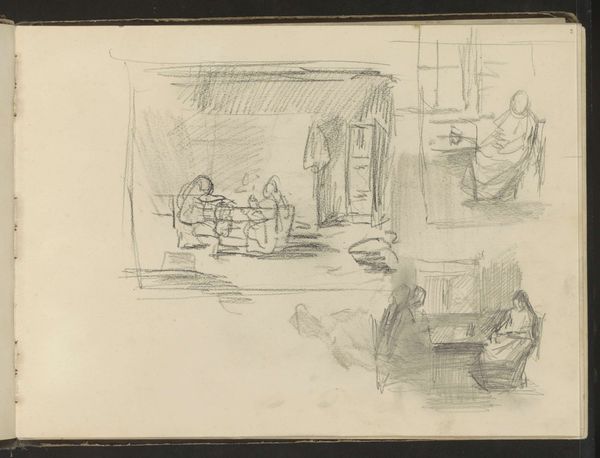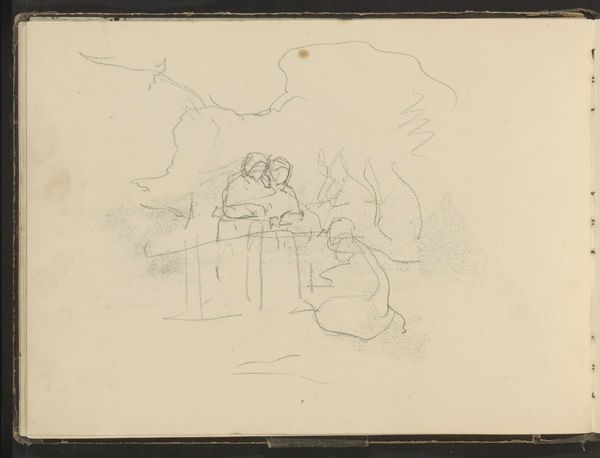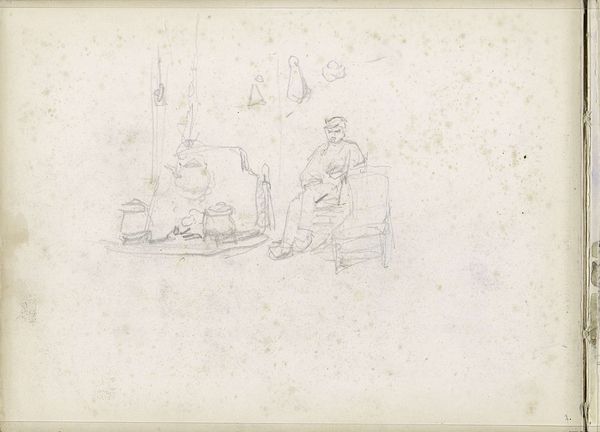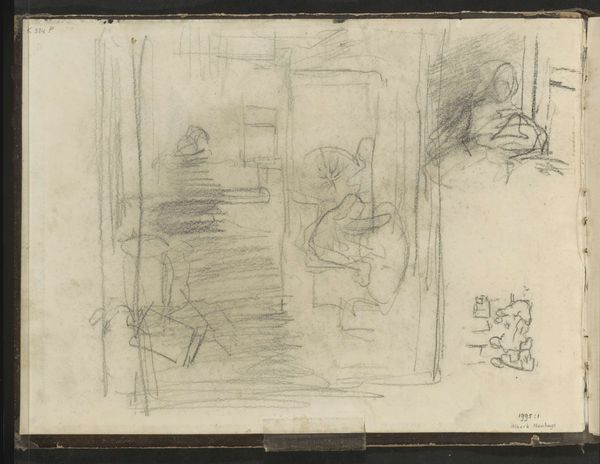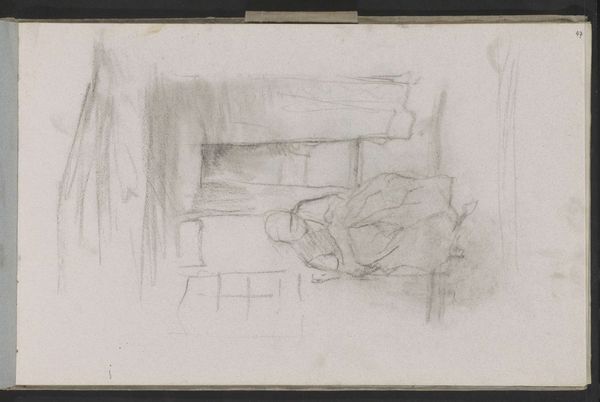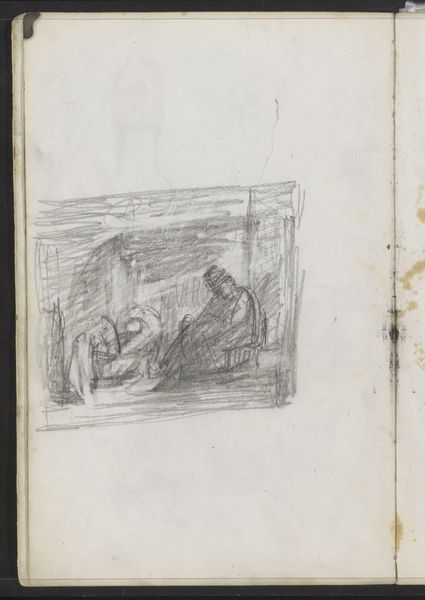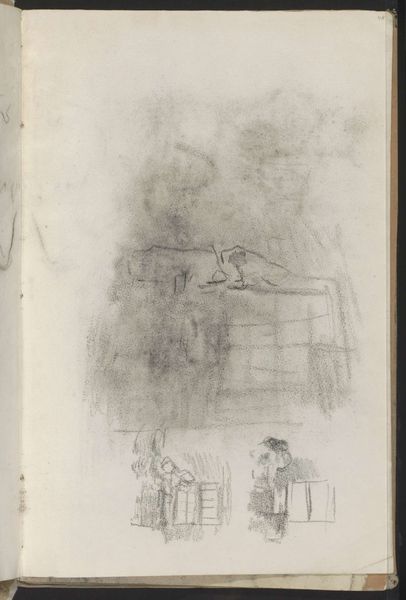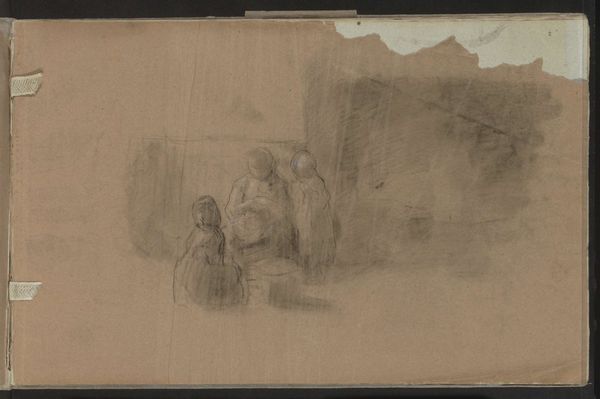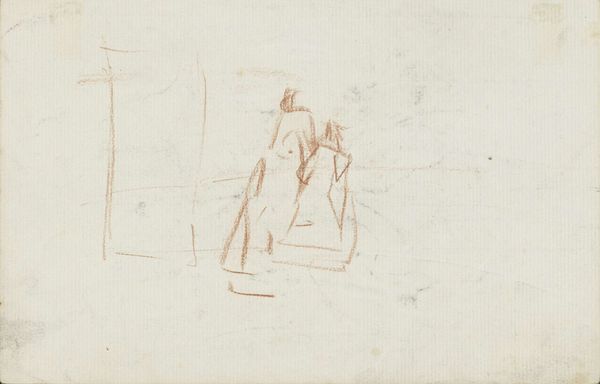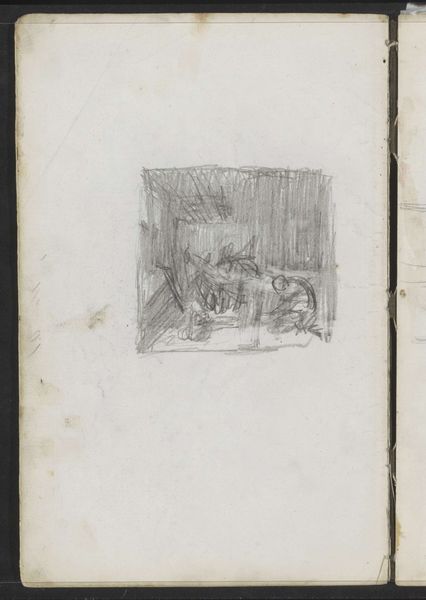
drawing, paper, pencil
#
portrait
#
drawing
#
paper
#
pencil
#
genre-painting
#
realism
Copyright: Rijks Museum: Open Domain
Curator: Welcome. We are standing before Albert Neuhuys’ drawing, titled "Naaiende vrouw zittend naast een wieg," placing it somewhere between 1854 and 1914. It resides here at the Rijksmuseum, a pencil drawing on paper. It seems simple at first glance. Editor: Yes, very simple. Almost austere, isn't it? Just a quick impression of domesticity. The woman hunched over her work, the implied presence of the child in the cradle, it feels muted, weary almost. Curator: Absolutely. This is realism, documenting daily life. It focuses on the working class, depicting their routines without romanticizing them. You see many genre paintings focusing on the lower class in Dutch art during this time. They speak volumes about societal conditions and emerging social consciousness. Editor: The cradle beside her and her own bent posture. The simple head covering is like a halo. You know, a woman and child theme that goes back centuries but completely grounded here, divested of any overt religious meaning. More of a universal experience of motherhood. The needlework even, could be seen as her spinning fate and protecting a fragile life. Curator: It makes sense you consider this artwork and women’s social condition. The institutional changes that began appearing at this period started depicting lower-class life realistically, and became acceptable subject matter at exhibits during this time, especially domestic interiors and scenes of working women. Editor: So it's the ordinariness, the seeming lack of specialness that creates the symbolic strength of this art. It's not the Queen that protects their kid. Instead, you might feel that it is an icon of enduring human commitment. It reminds me a great deal of images about immigrants from Europe during the period of artwork creation and after. Curator: I understand this sentiment well. When one looks beyond the pencil lines, we have a lens into both the lives of working class women and social class artistic interpretations. Editor: An eloquent encapsulation of so much, from the history that produced it, to the enduring echoes it contains.
Comments
No comments
Be the first to comment and join the conversation on the ultimate creative platform.
